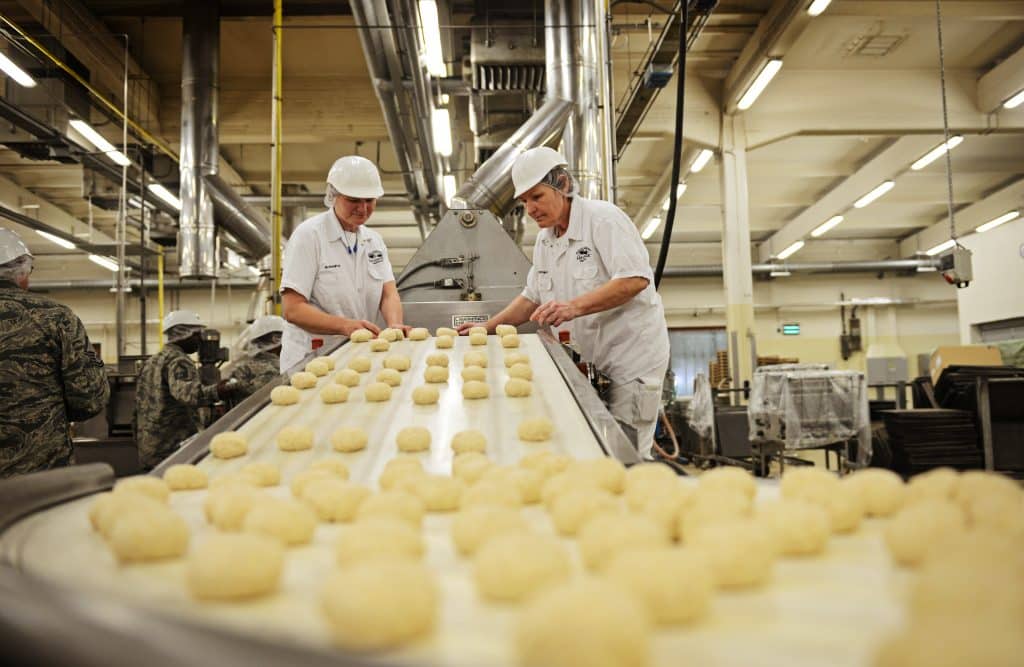The promise and hidden peril of the frozen food market

(Read Part 1 of 2: Ensuring Safe Food Production During Coronavirus)
In the midst of a pandemic-induced economic slowdown, the food and beverage sector remains active and should be acknowledged for maintaining food security during a challenging time. And while reports emphasize the strength of the food supply chain, both with regard to production and distribution, there remain fundamental limitations with vapor compression infrastructure that threaten production rates and food safety.
Safety Challenge #1: In batch freezing applications, such as blast freezing pallets of packaged product, engine room compressors are overworked during the first 30% of a blast cycle. This increases freeze times while sacrificing safety and quality.
This is an investment feasibility challenge, not a technical one. A well-designed, economically-optimized ammonia system should indeed lose the ability to maintain pressure setpoints in the low low temperature (LLT) vessel during the first 30% of a blast cycle. Why? Because the ROI on oversizing vapor compression capacity to meet the initial, elevated heat load when warm product is first introduced to blast freezers just isn’t practical. Facilities can’t practically purchase, install and operate expensive assets, such as compressors, that sit idle 70% of the year. Unfortunately, capacity-limited systems can also cause food safety issues if product isn’t properly frozen.
The technical challenge is that when temperatures in an engine room’s LLT vessel rise, the blast cell evaporator temperature is also going up, causing air temps in the freezer to fall slower than they should be. This leads to longer freeze times, reduced quality and increased food safety concerns. If the ammonia system could maintain pressure setpoints during the first 30% of the freezing process, product temperatures would come down quicker and freezing would happen sooner, thus ensuring faster, safer frozen food production.
Rebound Solution: By delivering liquid sub-cooling to an existing engine room, in bursts between 28-140 TR at -40°F, Rebound’s IcePoint system can increase existing vapor compression system capacity by more than 10%. Instead of purchasing additional boosters, high stage compressors, condensers, and piping/vessel upgrades, IcePoint instead delivers this additional capacity in a flexible package that can adapt to increase demand or changing product and packaging. The ability to adapt to transient heat transfer conditions within the blast cells ensures all product is reaching the internal temperatures required, in the time required, helping maintain compliance with all internal and external food safety regulations.
Challenge #2: In continuous freezing applications, like spiral and tunnel freezers, moist air flow causes frost layers to insulate evaporator coils, ruining heat transfer and, subsequently, increasing freeze times along with food safety risk.
In just eight hours of runtime, the performance of a typical IQF tunnel freezer freezing poultry, pork, beef, seafood, fruit, vegetables or even pet food can be cut in half. During operation, frost can easily double an evaporator coil’s thermal resistance, ruining heat transfer and thus the cooling provided. To combat this effect, defrost cycles send heat through the coils to melt the frost layers, wasting time and energy. Sequential defrost systems ensure continuous operation without necessary shutdowns, but come at the economic expense of redundant coils and, similarly, an added heat load. The inability to rapidly adjust to transient heat transfer conditions within continuous freezers causes ‘soft product’ safety concerns.
Various moisture control solutions such as liquid desiccant and desiccant wheels systems attempt to address moisture-related production constraints, but poor economics can’t be overlooked. The capital expense of the desiccant infrastructure along with the additional heat load placed on the freezer make these products non-ideal solutions.
Rebound Solution: Instead of wasting time attempting to reinvent the trivial techno-economic benefits of traditional desiccant systems, Rebound’s team of thermal scientists focused on ‘brine activity’ and, in doing so, developed a highly valuable air cooler integration that delivers 28-140 TR of -40°F cooling, absorbs up to 8GPH of moisture and does so using a natural antiseptic brine.
Brine activity is a characteristic that indicates the potential of its salt molecules to absorb water. Pure water has an activity of one, ocean water has an activity of 0.98 and Rebound’s potassium acetate-based brine has a very low activity of 0.6. This means the Rebound brine is incredibly thirsty for more water, even at low temperatures like -40°F.
This low activity brine, when leveraged as a natural desiccant, removes moisture, mitigates frost build up and accelerates freezing times. Moist air is removed from the freezer and sent through Rebound’s air cooler before being returned back to the freezer. Moisture is removed, but not completely, as this would lead to unacceptable product weight loss. For retrofit applications, using a single IcePoint system extends freezer uptime by 1-4 hours before requiring defrost. That means hundreds of additional annual operating hours at, or closer to, design point production outputs.
The brine’s low activity also qualifies it as a natural antiseptic because bacteria, fungus, and other microorganisms can’t survive brine exposure. Listeria and other bacteria are inhibited below 0.92 meaning that, with at a brine activity of 0.7, the air exiting Rebound’s air cooler is sterilized. Any micro-organisms picked up in the air stream of the freezer simply flow through the air cooler and are killed by brine. Just to check all the boxes, potassium acetate is also a USDA-approved food additive.
Food producers struggle with food safety because their production is handicapped by antiquated infrastructure that lacks the agility to adapt to transient thermal conditions. This makes accelerating food production during a global crisis, like the Covid-19 pandemic, a real challenge. IcePoint is currently the only economically-practical, risk-free integration to both increase output while maintaining food safety, without extensive engine room disruptions.